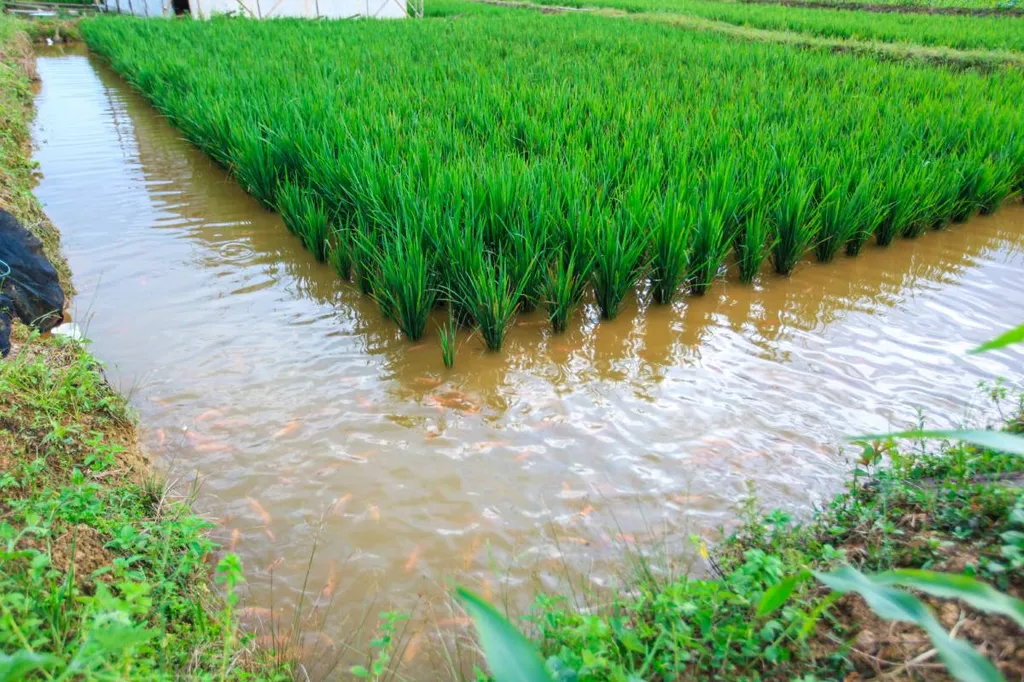In the heart of Sri Lanka, a groundbreaking study is reshaping the way we think about integrated rice-fish farming (IRFF). Led by Hewa Kondaramage Rasika Sampath Kumara from the Department of Zoology and Environment Sciences at the University of Colombo, this research is not just about growing rice and fish—it’s about optimizing the delicate balance between the two to boost yields and improve soil and water quality.
The study, published in the Journal of Fisheries (known in English as the ‘Journal of Fisheries’), explored how different rice planting spacings affect the growth and yield of both rice and fish in an IRFF system. The findings are nothing short of transformative. By experimenting with four different planting spacings—10 cm × 10 cm, 15 cm × 15 cm, 20 cm × 20 cm, and 25 cm × 25 cm—the researchers discovered that the 15×15 cm spacing provided the best balance, supporting high yields for both rice and fish without adverse effects on soil fertility or water quality.
“Our goal was to find the sweet spot where both rice and fish could thrive,” said Hewa Kondaramage Rasika Sampath Kumara. “We wanted to ensure that the farming practice was not only productive but also sustainable, benefiting both the environment and the farmers.”
The study revealed that narrower spacing enhanced total rice yield through higher plant density but reduced individual plant performance. Conversely, wider spacing improved individual plant growth yet lowered total yield. This delicate balance is crucial for farmers looking to maximize their output while maintaining the health of their soil and water resources.
One of the most significant findings was the improvement in soil nutrient levels (N, P, and K) and organic matter (OM) across all treatments, with the 15×15 cm spacing showing the highest enrichment. Water quality parameters such as pH, electrical conductivity (EC), temperature, dissolved oxygen (DO), nitrate (NO3–), and ammonia (NH3) remained within non-toxic limits, ensuring a healthy environment for both the rice and the fish.
The implications of this research are far-reaching. For the energy sector, which often relies on sustainable agricultural practices to reduce its carbon footprint, this study offers a blueprint for optimizing crop and fish production. By adopting the 15×15 cm spacing, farmers can enhance their yields while maintaining the ecological balance, making their operations more resilient and profitable.
“This research is a game-changer for the agricultural sector,” said a spokesperson for the energy sector. “It provides a clear path forward for sustainable farming practices that can support both food security and environmental health.”
As we look to the future, the findings from this study could shape the development of new agricultural technologies and practices. By fine-tuning the spacing between rice plants, farmers can achieve higher yields and better resource use efficiency, ultimately contributing to a more sustainable and productive agricultural system.
In the words of Hewa Kondaramage Rasika Sampath Kumara, “This is just the beginning. We hope our findings will inspire further research and innovation in integrated rice-fish farming, leading to even greater advancements in sustainable agriculture.”
With the publication of this study in the Journal of Fisheries, the stage is set for a new era of agricultural innovation, one that promises to benefit farmers, the environment, and the energy sector alike.

